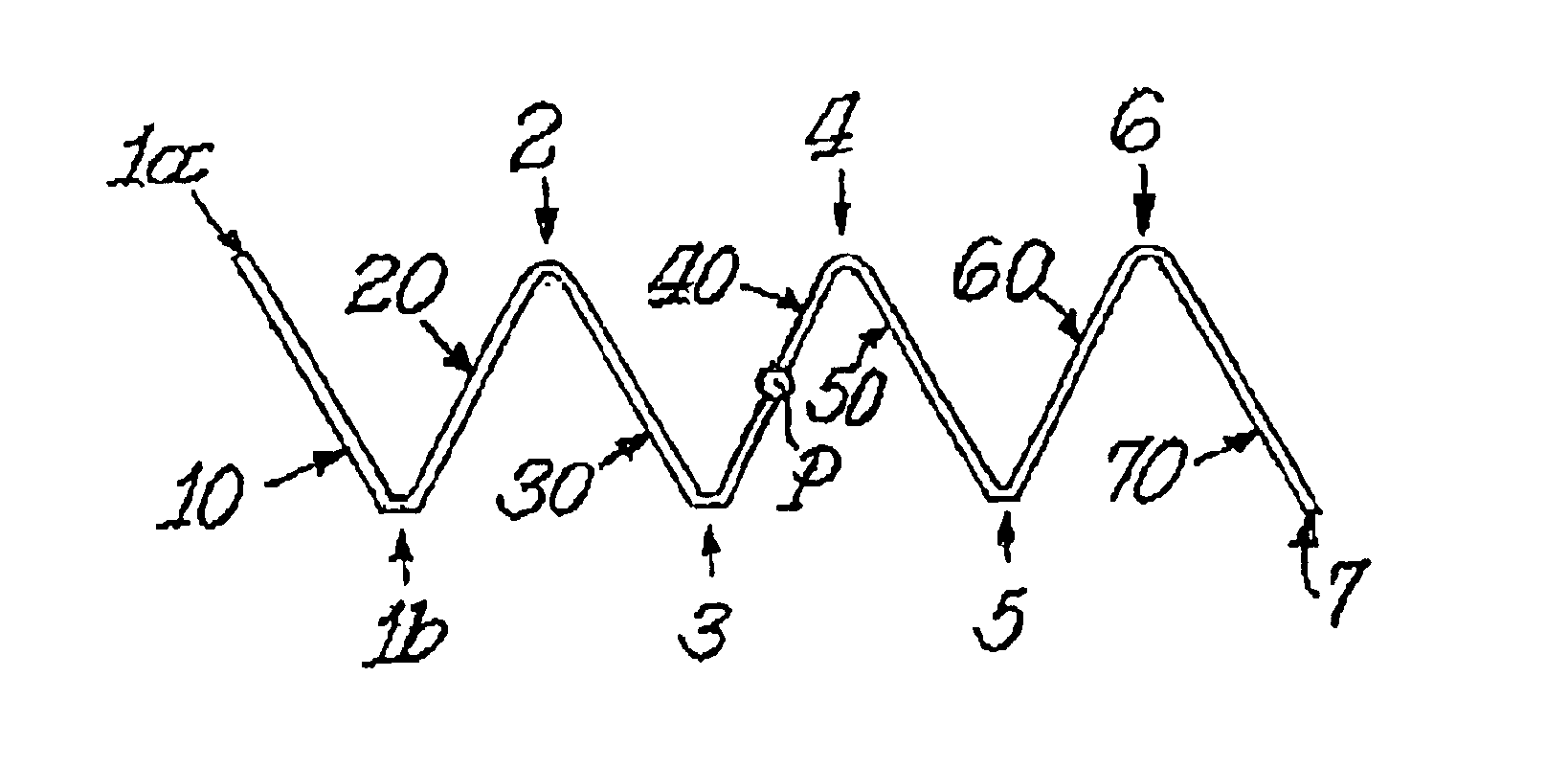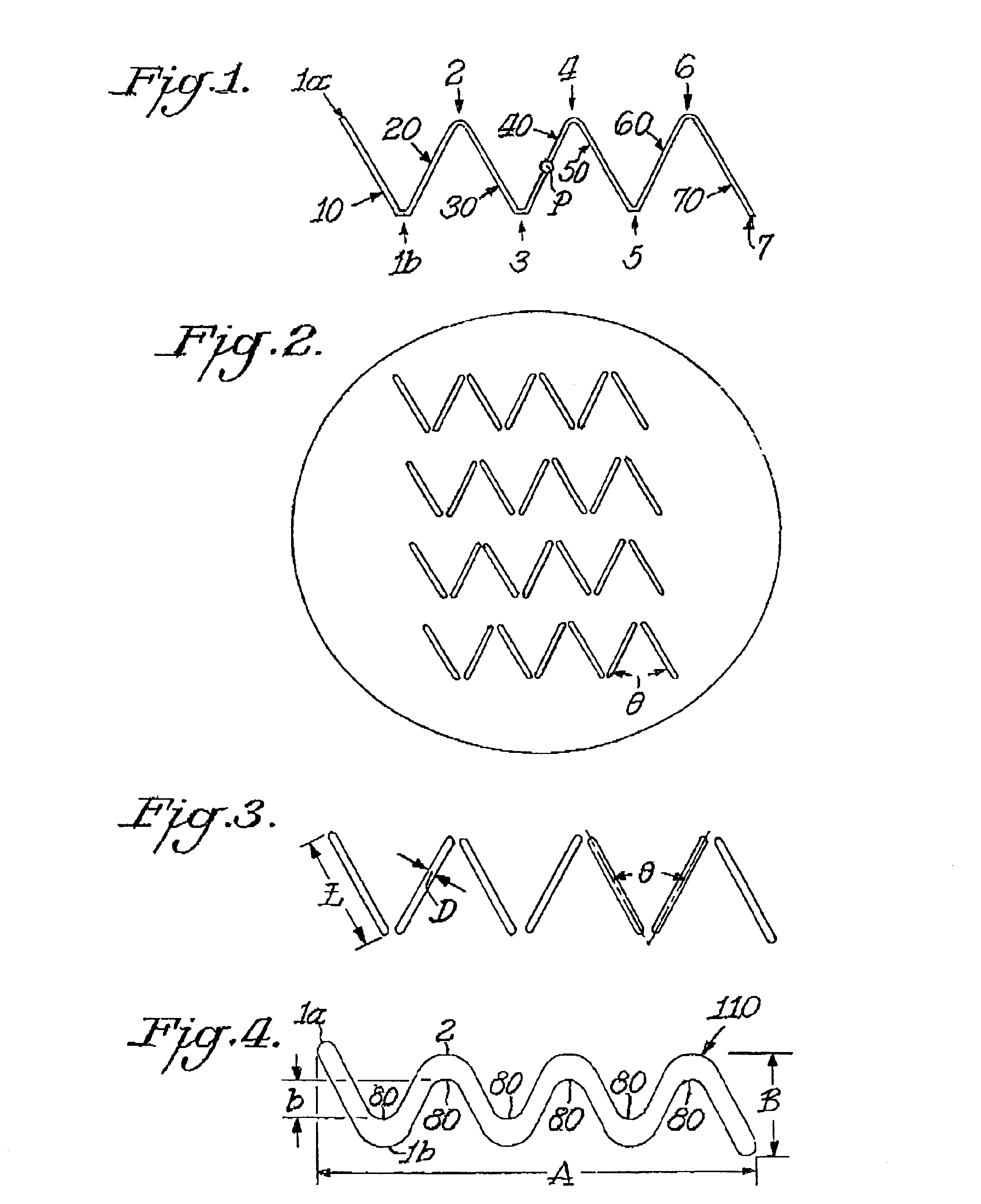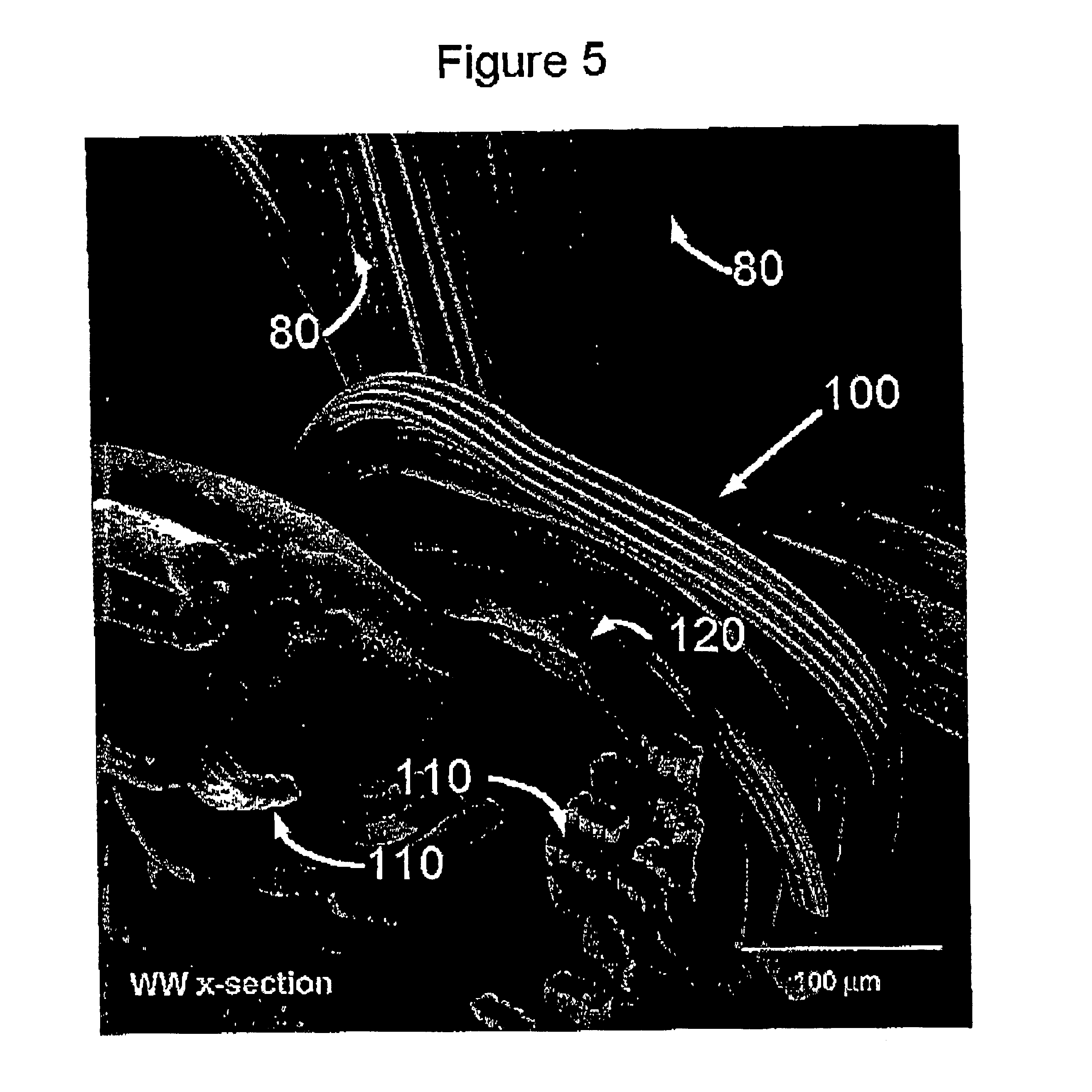Fabric incorporating polymer filaments having profiled cross-section
a technology of polymer filaments and cross-sections, applied in the direction of filament/thread forming, yarn, transportation and packaging, etc., can solve the problems of difficult construction and high cost of warp knit and woven fabrics, and achieve the effect of high moisture-wicking ability
- Summary
- Abstract
- Description
- Claims
- Application Information
AI Technical Summary
Benefits of technology
Problems solved by technology
Method used
Image
Examples
example a
[0053]An 80 denier-26 filaments double “W” transverse cross-section yarn was spun at a temperature of 290° C. The yarn was spun with nylon 6,6, having a relative viscosity (RV) of between 45-47. A normal nylon pack formulation was used using spinnerets in a configuration of three ends per pack having the double “W” transverse cross-section. The nylon 6,6 was spun at a windup speed of 3000-3200 yards per minute and drawn at a draw ratio of 2.5-2.7 X. The tenacity of the filaments was 3.6 grams per denier, and the yarn had an elongation to break of 42%. The yarn had a cross-section shape of substantially that presented in FIG. 4. Normal spin / secondary spin finishes were used. A photomicrograph of the yarn is shown in FIG. 5.
[0054]The yarn was woven in a six harness irregular satin weave. After weaving, each sample was tested via a vertical wicking test. The samples were scoured thoroughly to remove all finishes. The sample was cut into 1 inch (25 mm) wide strips about 8 inches long an...
PUM
| Property | Measurement | Unit |
|---|---|---|
| angle | aaaaa | aaaaa |
| angle | aaaaa | aaaaa |
| angle | aaaaa | aaaaa |
Abstract
Description
Claims
Application Information
 Login to View More
Login to View More - R&D
- Intellectual Property
- Life Sciences
- Materials
- Tech Scout
- Unparalleled Data Quality
- Higher Quality Content
- 60% Fewer Hallucinations
Browse by: Latest US Patents, China's latest patents, Technical Efficacy Thesaurus, Application Domain, Technology Topic, Popular Technical Reports.
© 2025 PatSnap. All rights reserved.Legal|Privacy policy|Modern Slavery Act Transparency Statement|Sitemap|About US| Contact US: help@patsnap.com



